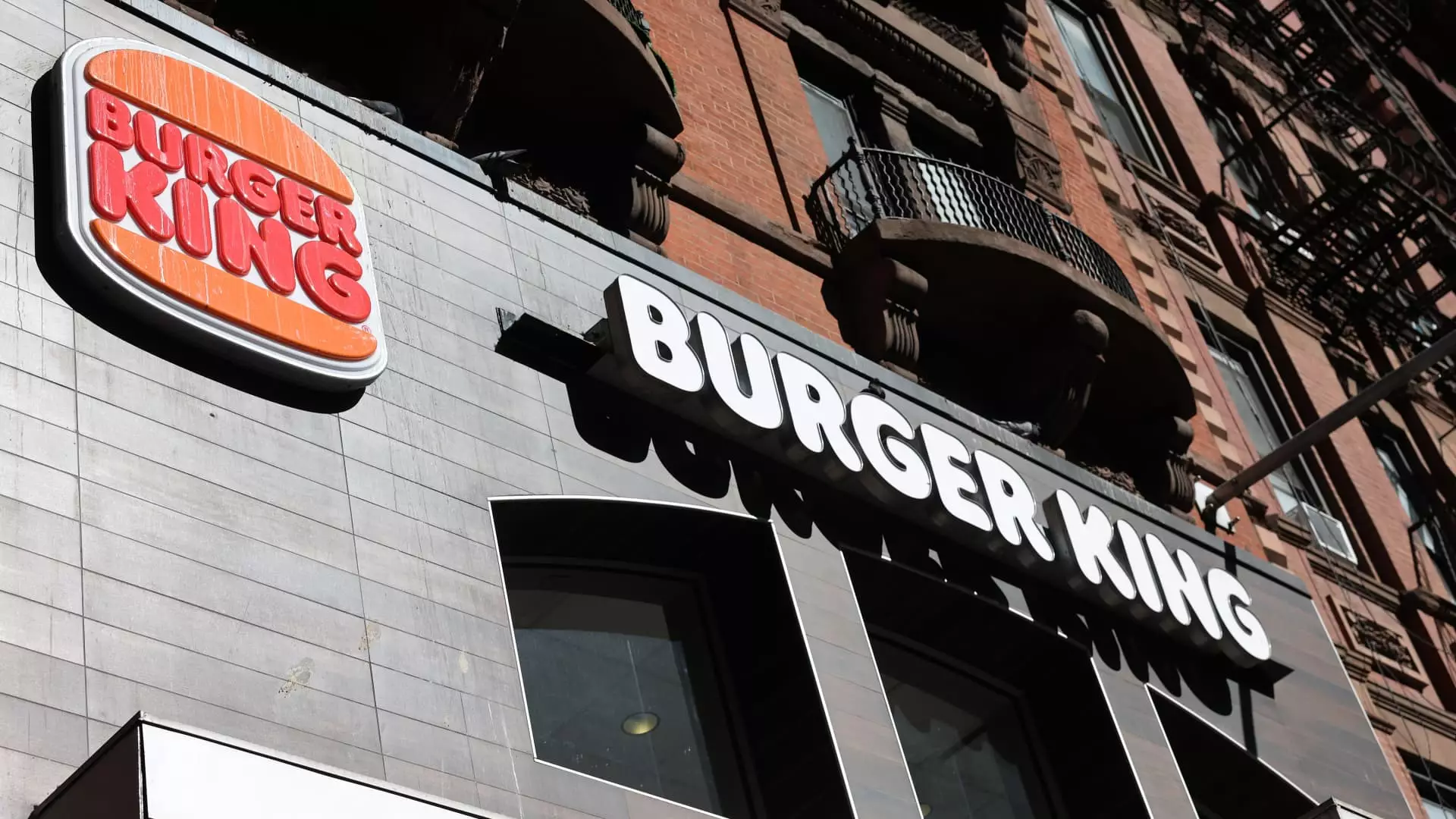Restaurant Brands International (RBI) has recently found itself in precarious territory, reporting quarterly earnings that not only failed to meet analysts’ expectations but also showcased a downturn in consumer behavior across its flagship brands: Popeyes, Burger King, and Tim Hortons. With a dip in same-store sales, the news has investors worried, and frankly, rightly so. A decline in revenue and overall consumer confidence is a harbinger of troubling times ahead, and it’s hard to blame them for feeling disenchanted. The fast-food sector thrives on predictability and stability—a steady stream of returning customers eager for comfort food.
Financial Figures That Raise Eyebrows
Consider this: RBI’s earnings per share came in at 75 cents, falling short of the 78 cents forecasted by Wall Street, while its revenue of $2.11 billion also lagged behind expectations of $2.13 billion. These numbers—not just a mere slip but an alarming gap—reveal a glaring issue that calls for introspection. The company reported net income of $159 million, a stark decline from last year’s $230 million. To many, these figures do not just indicate a quarter of underperformance; they suggest something fundamentally wrong within the organization.
Moreover, the reported overall same-store sales growth of merely 0.1% doesn’t portray a company in the throes of winning; instead, it exhibits a worrisome stagnation in a rapidly evolving fast-food landscape. While enthusiasm for brands like Firehouse Subs may partially buoy the company’s revenue, the stark fact remains that its three most profitable chains are struggling to retain customers consistently.
The Consequences of a Cautious Consumer Base
Looking deeper into the numbers reveals a severe drop for some flagship brands. For example, Tim Hortons, which generates over 40% of RBI’s total revenue, posted a disappointing same-store sales decline of 0.1%, drastically missing projections for growth. Similarly, Burger King saw its same-store sales shrink by 1.3%, while Popeyes experienced a staggering 4% decrease—the largest drop for the quarter. The market was generally expecting lesser declines, indicating a departure from consumer appetite for these established chains.
This downturn is concerning, especially in a climate where competitors have also reported similar struggles. Factors such as erratic weather and a more cautious spending attitude among consumers could explain some of this hesitancy. Yet at a fundamental level, the brands need to reflect on whether they are losing their touch with customers. Are the offerings becoming stale, or are marketing strategies failing to resonate?
Fighting Back with Innovation
The challenge for RBI lies not only in acknowledging these staggering numbers but also in responding effectively. Can the company innovate its menu offerings and marketing strategies to adapt to current consumer preferences? The fast-food industry’s future hinges on its ability to pivot quickly in the face of adversity.
A sentiment of urgency lingers, urging the company to break free from this complacency. This is a critical juncture where the management must galvanize its teams into action, re-evaluate its brand strategies, and perhaps most importantly, reignite customer engagement. Without bold steps forward, RBI risks not just a stagnation but a stark decline in its once-unshakeable market position. The numbers tell a story that demands immediate and thoughtful response, and the clock is ticking.

